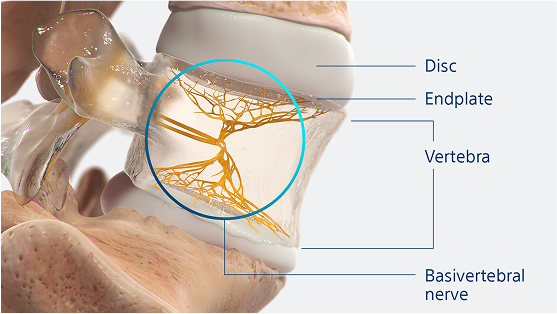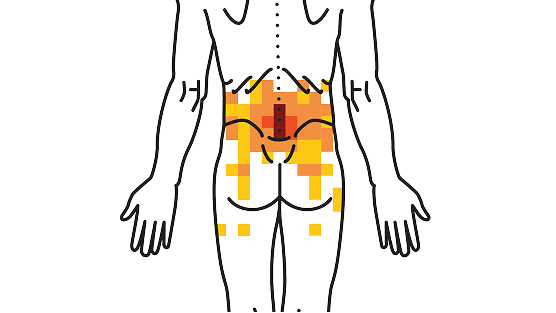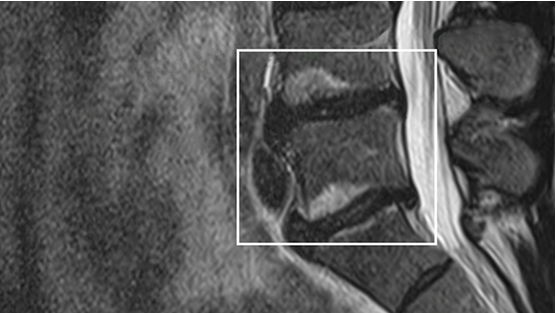
Understanding your pain
One in six people with chronic low back pain might actually have a specific type of low back pain called vertebrogenic (ver-tee-bro-JEN-ic) pain. Vertebrogenic pain stems from a nerve in your spine bones and can often be missed or misunderstood. Understanding the source of your pain is the first step to finding relief.

What causes vertebrogenic pain?
Your spine is made up of bones, called vertebrae. Each vertebra has a top and bottom surface known as vertebral endplates. These endplates connect the vertebrae to discs, which act like cushions in between each vertebra.
Inside the vertebra is a nerve called the basivertebral (bay-zee-VER-teh-bral) nerve. The nerve has branches that reach the vertebral endplates and can send pain signals.
When the endplates become damaged—from disc degeneration, everyday wear and tear, or injury—they can irritate the basivertebral nerve. When this happens, the nerve sends pain signals to your brain resulting in vertebrogenic pain. This simply means “pain that comes from the vertebrae.”
Symptoms of vertebrogenic pain

Patients who find relief through the Intracept™ Procedure often describe pain that is centralized in the middle of the back, but is sometimes felt in surrounding areas.
It is made worse by:
Physical activity
Prolonged sitting
Bending forward
Bending and lifting

Over the decades, it just got worse. The extreme pain didn’t go away. It was every day, nearly impossible to get out of bed, lean forward to brush my teeth, bend down to feed the dog. It was so unbearable.
– Megan Intracept patient

Photograph by Boston Scientific
How is vertebrogenic pain diagnosed?
To find out if you have vertebrogenic pain, your doctor will usually:
• Review your medical history
• Perform a physical exam
• Order imaging, such as an MRI
The MRI is important for a diagnosis. If you have vertebrogenic pain, your MRI will likely show signs of inflammation in your endplates, called Modic changes.
A one-time treatment for vertebrogenic pain
Address your pain without the fear of a major surgery that includes implanted devices or hardware. The Intracept Procedure is a minimally invasive, one-time outpatient procedure. Recovery time varies by individual, but most people go home the same day and get back to normal activities within 1-2 weeks.1
Watch this overview video.

Take the next step
Find a doctor
See if you may benefit from the procedure, and connect with an Intracept-trained physician near you.
Back pain relief, backed by Boston Scientific
The Intracept Procedure is part of the Boston Scientific chronic pain division, providing information, resources, and support for pain patients and caregivers. If you don't think you have vertebrogenic pain, consult with your doctor. You can also take a quiz on Pain.com to learn about other therapies Boston Scientific provides that may be more suitable for you and your condition.
References
1. Khalil JG, Truumees E, Macadaeg K, et al. Intraosseous basivertebral nerve ablation: A 5-year pooled analysis from three prospective clinical trials. Interv Pain Med. 2024;3(4):100529. Published 2024 Dec 13. doi:10.1016/j.inpm.2024.100529
